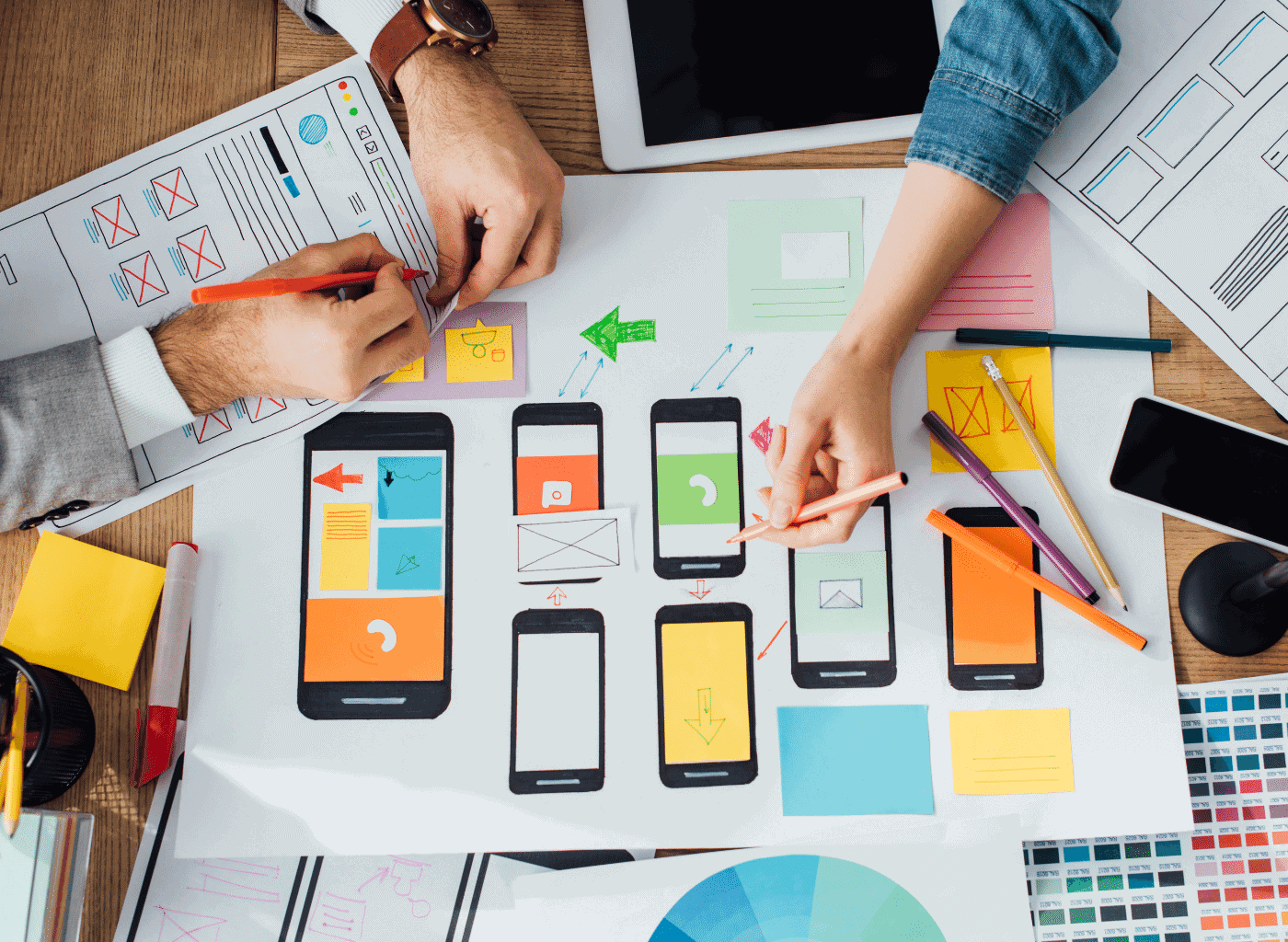In 2021, mobile apps are projected to generate $308.9 billion in revenue via app stores and in-app advertising. What’s more, enterprise mobility is estimated to be worth $510.39 billion by 2022. Success within the competitive landscape of these growth projections can become a reality but is dependent on the support of a precisely cultivated mobile app development process.
1. STRATEGY
First, the mobile app development process defines the strategy for evolving your idea into a successful app. You may include a more significant part of this in your overall enterprise mobility strategy. While one app’s objectives may differ from another, there is still an app-specific impact to the mobility strategy to address during the development process.
In this phase, you will:
- Identify the app users
- Research the competition
- Establish the app’s goals and objectives
- Select a mobile platform for your app


2. ANALYSIS AND PLANNING
At this stage, your app idea starts taking shape and turns into an actual project. Analysis and planning begin with defining use cases and capturing detailed functional requirements.
Once you have identified the requirements for your app, prepare a product roadmap. This includes prioritising the mobile app requirements and grouping them into delivery milestones. If time, resources or costs are a concern, then define your minimum-viable-product (MVP)and prioritize this for the initial launch.
3. UI / UX DESIGN
The purpose of an app’s design is to deliver seamless and effortless user experiences with a polished look.
The success of a mobile app certainly hinges on how well users are adopting and benefiting from all its features. The goal for mobile app UI / UX design is to create excellent user experiences making your app interactive, intuitive, and user-friendly. While polished UI designs will help with early adoption, your app must have intuitive user experiences to keep app users engaged.
- Information Architecture & Workflows
- Wireframes
- Style Guide
- Mockups
- Prototype


4. APP DEVELOPMENT
Planning remains an integral part of this phase in the mobile app development process. Before actual development/programming efforts start, you will have to:
- define the technical architecture,
- pick a technology stack, and
- define the development milestones.
A typical mobile app project is made up of three integral parts: back-end/server technology, API(s) and the mobile app front-end.
5. TESTING
Performing thorough quality assurance (QA) testing during the mobile app development process makes applications stable, usable, and secure. To ensure comprehensive QA testing of your app, you first need to prepare test cases that address all aspects of app testing.
- User Experience Testing
- Functional Testing
- Performance Testing
- Security Testing
- Device and Platform Testing


6. DEPLOYMENT & SUPPORT
Releasing a native mobile app requires submitting your app to the app stores including the Apple App Store for iOS apps and the Google Play for Android apps. For this reason, you will need a developer account with Apple App Store and Google Play Store before launching your mobile app.
An app’s release in the app store requires preparing metadata including:
- Your app’s title
- Description
- Category
- Keywords
- Launch icon
- App Store screenshots
Once submitted in the Apple App Store, iOS apps go through a review process which may take from a few days to several weeks depending on the quality of your app and how closely it follows Apple’s iOS development guidelines. If your app requires users to log in, then you will need to provide Apple with a test user account as part of the release process.


